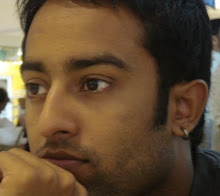this is the state of Indian education. yes, thankfully, I belong to 1% but the opportunity to teach and train is enormous! big deal, if I lose the job! I will make a job for myself!
-----------------------------------------------------------------------------------
Center for the advanced study of India
Indian higher education
Suppose a job applicant came to you and said that he was a 2nd class English graduate of Agra University. What does that convey? Can this person, for instance, write a two-page essay in English that has a structure and an argument with few grammatical errors? If not, what exactly can the person do that he could not have if he had simply stopped studying after high school? What skills has he learnt in the three additional years of education?
The answers to these questions speak to one of the most crucial challenges facing Indian higher education: its quality. Whenever Indians think about quality in higher education they mentally jump to the IITs and IIMs, which have justifiably become international brand names. Yes, there are other names that also signal quality, be it the venerable IISc and ISI, the new National Law Schools, the dozen or so well-known medical schools and perhaps a score of what one might call liberal arts undergraduate colleges. There are some more enrolled in design, architecture and fine arts; add them all up, and its about 50-60,000 students out of a total of more than 12 million enrolled in higher education that we are talking about.
Let's double the number. That's still 1 per cent that attracts all the attention. Newspapers run breaking stories of who gets in and breathless stories of job placements and skyrocketing salaries. Intellectuals passionately argue the case for affirmative action in these institutions to advance social justice. And politicians of all hues lobby to get an IIT or an IIM located in their state.
Pity the remaining 99 per cent. How many newspaper stories have you read about just what jobs the graduates of the local college or agriculture university got? Or intellectuals getting as passionate for the social justice denied to the vast majority condemned to a mediocre education? Or politicians getting excited about the lack of a good agriculture university or nursing school in their state?
The 11th Plan has set ambitious goals for raising the quality of Indian higher education amongst which is the setting up of 14 "world-class" universities. It's a laudable goal, but what's puzzling is that somehow it is seen as something that needs to be done from scratch. In fact, in most of our major cities we have the nucleus of world-class universities. In Bangalore, suppose one had an umbrella that covered IIM-B along with National Law School, IISc and St John's Medical College. Right there India has a world-class university with excellent business, law, and medical schools and science and engineering. The same could be the case in Ahmedabad, if one combined, for example, IIM-A, with NID, PRL and SAC. In Delhi, if one could manage a creative merger of four-five of the best undergrad colleges with the Delhi School of Economics, ISI, IIT-Delhi, NPL, AIIMS and National Institute of Immunology, for sure the resulting institution would be on any top 500 list. In Hyderabad, there's CCMB, NMRL, IIIT, the new IIT and NALSAR Law College - again their combined strength would be formidable. Chennai, Kolkata and Mumbai also offer similar possibilities. That's seven possible world-class universities.
The essential requirements for quality higher education are basically three: concentration of talent, both students and faculty; financial resources that are substantial and stable; and governance, especially autonomy on teaching, research, admissions, hiring and pay. All great universities have these in abundant measure. India's best higher education institutions have them as well, with one major caveat: they are single-dimensional, rather than the multiple faculties that are the hallmark of a great university.
The proposal to create new "world-class" universities ignores a fundamental reality. The only way this can happen in the foreseeable future is if these institutions massively cannibalise faculty from India's existing high quality institutions. It was recently reported that a UGC study covering 14 central universities found that 42 per cent of posts at the level of professor, 29 per cent at the reader level and 34 per cent at the lecturer level are lying vacant. Further rapid expansion can only result in robbing Peter to pay Paul. And frankly any claims otherwise are simply farcical.
Combining existing institutions of excellence under a common umbrella may seem ludicrous - who ever thought of mergers and acquisitions in higher education? But the idea is less radical than it sounds. Great universities have strong federal structures that give their constituent colleges autonomy on most issues that matter. Yet the whole is more than the sum of its parts. If India spends Rs 500 crore to build common systems and infrastructure for each of the seven possibilities outlined above, there's a reasonable possibility that it could build seven world-class universities in a couple of decades. If, however, it persists with its existing blueprint, it has almost no chance and that too will come at the cost of existing institutions. And it still leaves the daunting challenge of how to improve the quality of the remaining 99 per cent.
Sunday, December 13, 2009
Subscribe to:
Post Comments (Atom)

No comments:
Post a Comment